When it comes to the legendary 2JZ engine, everyone wants that perfect blend of power, reliability, and smooth performance. But here’s the catch: upgrading your camshaft and valve train isn’t just about slapping on the biggest parts you can find. It’s a delicate dance—balancing aggressive power gains with long-term durability. Imagine your engine as a finely tuned orchestra, where every component must hit the right note at the right time. The camshaft and valve train are the conductors, controlling how air and fuel flow, and ultimately how your engine breathes.
Choosing the right upgrades means understanding your build’s goals. Are you chasing high-RPM thrills on the track? Or maybe you want a street-friendly setup that still packs a punch? Either way, the camshaft’s profile—how long and how far the valves open—directly shapes your engine’s personality. Pair that with valve springs and retainers that can handle the stress, and you’re setting yourself up for success rather than heartbreak.
Think of it like this: upgrading these parts isn’t just about raw numbers on a dyno sheet. It’s about how the engine feels under your foot, how it responds when you hit the gas, and how reliable it stays after thousands of miles. The right cam and valve train upgrades can transform your 2JZ from a solid performer into a beast that’s both thrilling and trustworthy. And yes, it’s totally possible to find that sweet spot without going overboard.
In this guide, we’ll dive into the best camshaft options for both the 2JZ-GTE and 2JZ-GE, explore how to pick the right duration and lift for your powerband, and break down the pros and cons of different valve spring setups. We’ll also touch on lightweight components like titanium retainers that reduce stress at high RPMs, and walk you through setting valve lash properly to avoid costly mistakes.
By the end, you’ll have a clear roadmap to upgrading your 2JZ’s camshaft and valve train with confidence—making sure your engine not only performs better but lasts longer. Ready to give your 2JZ the upgrade it deserves? Let’s get started.
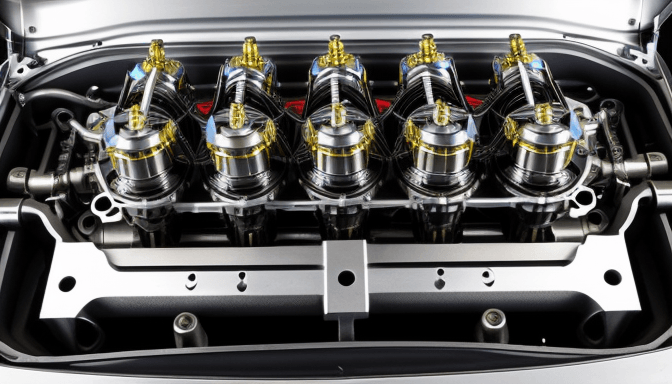
Best Performance Camshaft Options for 2JZ-GTE and GE
When it comes to upgrading your 2JZ engine, picking the right camshaft is like choosing the perfect pair of shoes for a marathon—you want something that fits your style and gets the job done without slowing you down. The 2JZ-GTE and 2JZ-GE engines each have their quirks, so the camshaft options vary depending on whether you’re chasing turbocharged power or naturally aspirated smoothness.
For the 2JZ-GTE, which is already a beast out of the box, the goal is usually to push it harder without losing reliability. Many enthusiasts lean towards cams that offer a bit more duration and lift to let the engine breathe better at high RPMs. This means more power when you really stomp the pedal, but it can come at the cost of low-end torque if you’re not careful. Brands like Brian Crower and GSC have cams designed specifically for turbo setups, balancing aggressive profiles with durability. These cams help the engine spool quicker and hold boost longer, making your turbo sing rather than cough.
On the flip side, the 2JZ-GE is naturally aspirated and thrives on smooth, linear power delivery. Here, camshaft upgrades often focus on improving airflow without sacrificing drivability. You want cams that open the valves just enough to let in more air but keep the engine responsive around town. Kelford and Supertech offer great options that bring out more horsepower without turning your daily driver into a wild stallion. It’s like tuning a guitar—you want the strings tight enough to play a great tune but not so tight they snap.
Choosing between cams also depends on your build goals. Are you aiming for a street car that occasionally hits the track? Or a full-blown race machine? For street builds, moderate lift and duration cams are your friends. They keep the engine happy in traffic and still unleash extra power when you want it. For race builds, more aggressive cams with higher lift and longer duration open up the top end but demand supporting upgrades like stronger valve springs and upgraded fuel systems.
Here’s a quick comparison to give you a clearer picture:
| Engine | Camshaft Focus | Benefits | Considerations |
|---|---|---|---|
| 2JZ-GTE | High lift and duration | Better high-RPM power, improved turbo spool | May reduce low-end torque, requires supporting mods |
| 2JZ-GE | Moderate lift and duration | Smoother power delivery, improved mid-range torque | Less aggressive, ideal for street use |
At the end of the day, the best camshaft for your 2JZ depends on how you drive and what you want out of your engine. It’s not just about raw numbers; it’s about how the car feels when you’re behind the wheel. Think of your camshaft as the heart of your engine’s personality—choose wisely, and your 2JZ will thank you with every rev.
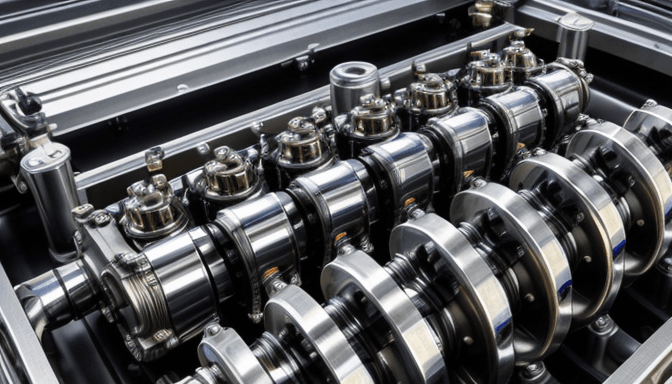
Choosing the Right Duration and Lift for Your Powerband
Picking the perfect camshaft duration and lift for your 2JZ engine isn’t just about numbers on a spec sheet. It’s like tuning a guitar—you want the right tension and length of string to hit the exact note you’re after. Duration and lift shape how your engine breathes, directly impacting where your power lives on the RPM scale. Too much duration, and you might find your engine feels sluggish at low speeds, like a sprinter who can’t start off the blocks. Too little, and you’re leaving horsepower on the table up top.
Duration refers to how long the valves stay open, measured in degrees of crankshaft rotation. Longer duration cams keep the valves open longer, allowing more air and fuel to enter at higher RPMs. This means more top-end power but at the expense of low-end grunt. On the flip side, shorter duration cams close the valves sooner, boosting torque at lower RPMs, which is great for street driving or daily cruising.
Lift, on the other hand, is how far the valve opens. Think of it as the size of the doorway your fuel and air have to squeeze through. Higher lift cams open the valves wider, letting in more mixture and increasing power potential. But this comes with its own set of challenges—higher lift demands stronger valve springs and more robust valvetrain components to keep everything in check at high RPMs.
So how do you decide what’s right for your build? It boils down to your driving style and goals. If you’re chasing a smooth street ride with plenty of torque for stop-and-go traffic, a cam with moderate duration and lift will keep your 2JZ responsive and reliable. But if you’re building a track monster that thrives on screaming revs, longer duration and higher lift cams will help you extract every ounce of power.
Here’s a quick way to think about it:
- Short Duration & Low Lift: Best for daily drivers, offering strong low-end torque and easy drivability.
- Moderate Duration & Lift: A balanced choice for street and occasional track use.
- Long Duration & High Lift: Ideal for race-focused builds, maximizing high-RPM horsepower.
Remember, the 2JZ is a versatile engine, but your cam choice must match your entire setup—intake, exhaust, fueling, and even your transmission gearing. It’s like assembling a puzzle; each piece affects the others. Don’t just chase big numbers; think about how you want your engine to feel every time you hit the gas. That’s where the magic happens.
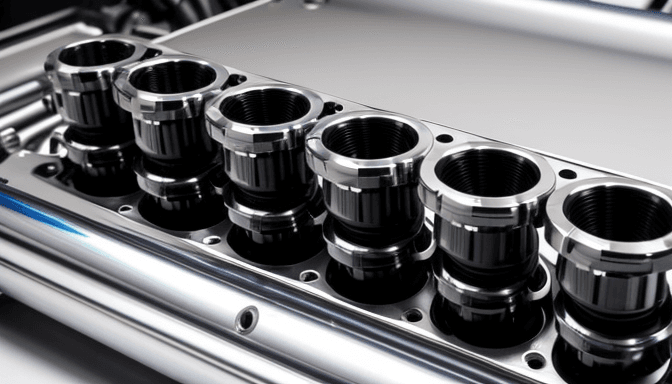
Single vs Dual Valve Springs: What’s Right for Your Build
When it comes to upgrading your 2JZ engine’s valve train, the choice between single and dual valve springs can feel like a puzzle. Both have their place, but understanding the subtle differences can save you a lot of headaches down the road. Think of valve springs as the heart of your valvetrain’s rhythm. They keep everything in sync, ensuring valves open and close at just the right moment. But not all springs are created equal.
Single valve springs are the classic, straightforward option. They’re simpler, lighter, and often more than enough for street builds or moderate power increases. If you’re cruising around town or hitting the occasional spirited drive, singles can deliver reliable performance without adding unnecessary complexity. I remember swapping to single springs on my own 2JZ-GE; the engine felt smoother, and I didn’t have to worry about the extra parts giving me trouble.
On the flip side, dual valve springs are like having a backup plan built right into your setup. They’re designed to handle higher RPMs and aggressive cam profiles by preventing valve float—a condition where the valve doesn’t follow the cam’s motion properly, leading to performance loss or even engine damage. If you’re pushing your 2JZ hard on the track or running a turbocharged beast with a wild cam, dual springs offer that extra layer of security. They grip the valve more firmly, keeping everything tight and controlled as RPMs climb.
But here’s the catch: dual springs add weight and complexity. More parts mean more potential points of failure, and the extra mass can slightly reduce your engine’s responsiveness. It’s a trade-off. You gain durability and peace of mind but might sacrifice a touch of throttle feel. So, what’s the best fit for your build? Consider your goals carefully.
If your build is all about daily driving with some spirited fun, single springs paired with quality retainers might be your best bet. They keep things light and simple. However, if you’re chasing high RPMs, track days, or big power numbers, dual springs become almost a necessity. They’re the safety net that keeps your engine running strong when the stakes get high.
In essence, choosing between single and dual valve springs boils down to balancing performance needs with reliability concerns. Don’t just pick what sounds good—think about how you drive, how hard you push your 2JZ, and what kind of maintenance you’re willing to tackle. It’s like picking the right shoes for a marathon versus a casual jog. Both get you moving, but only one fits the challenge ahead.
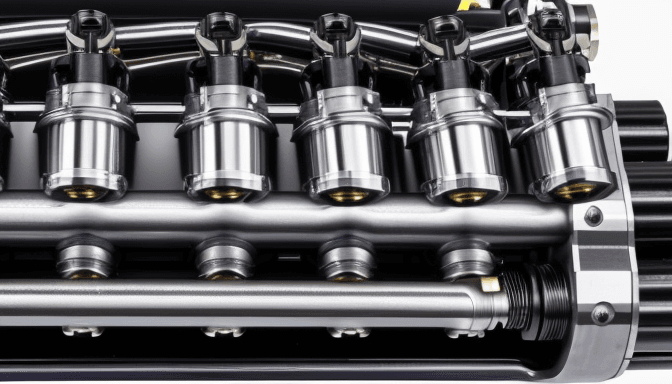
Titanium Retainers and Lightweight Valvetrain Components
When it comes to upgrading your 2JZ engine’s valve train, titanium retainers and other lightweight components are often the unsung heroes. You might wonder, why go lighter? Well, imagine your engine’s valvetrain as a finely tuned orchestra—every part must move in perfect harmony, and the lighter the parts, the faster and more precisely they can respond. Titanium retainers cut down on weight dramatically compared to traditional steel ones, reducing the inertia that can hold back your valves at high RPMs.
This weight reduction isn’t just a numbers game. It translates directly into better valve control, meaning your engine can rev higher without the risk of valve float—a condition where valves fail to follow the camshaft’s profile accurately, leading to lost power and potential damage. By swapping in titanium retainers, you’re essentially giving your 2JZ the freedom to breathe and perform at its peak, especially when you’re pushing the limits on the track or drag strip.
But titanium retainers are just one piece of the puzzle. Lightweight valve springs, pushrods, and rocker arms also play a crucial role in building a valvetrain that’s both reliable and ready to scream at high RPMs. These components reduce the overall mass the camshaft has to move, which lowers stress and heat buildup. Less stress means less chance of failure, and more heat resistance means your engine stays strong under pressure.
Think of it like upgrading from a heavy, clunky bicycle to a sleek racing bike. The lighter frame lets you pedal faster and handle better. Similarly, lightweight valvetrain parts let your 2JZ respond quicker and endure longer. Sure, these parts can carry a higher price tag, but the payoff in performance and engine longevity often makes it worth every penny.
One thing to keep in mind is that installing titanium retainers and lightweight components usually means you’ll need to fine-tune your valve springs and lash settings to match. It’s not a simple swap; it’s a careful balance. But when done right, the result is a valvetrain that feels almost alive—snappy, precise, and ready to unleash power on demand.
In short, if you’re serious about squeezing every ounce of performance from your 2JZ, investing in titanium retainers and lightweight valvetrain parts is a smart move. They don’t just reduce weight; they improve the entire dynamic of your engine’s top end, making your build more responsive and reliable when it counts the most.
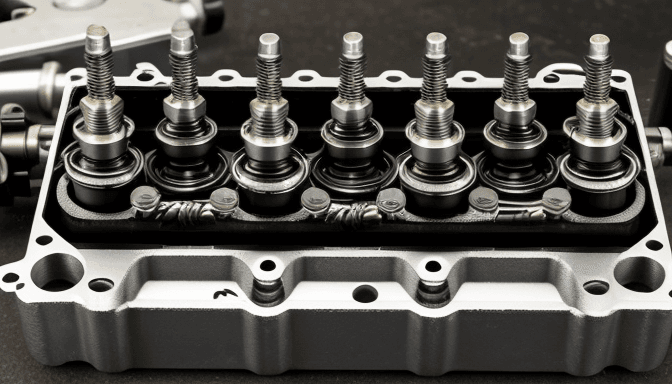
How to Set Valve Lash When Installing Aftermarket Cams
Setting valve lash might sound like a boring, technical chore, but trust me—it’s one of the most important steps when you’re upgrading your 2JZ with aftermarket cams. Think of valve lash as the tiny gap that lets your valves open and close smoothly without banging into each other. If you get it wrong, your engine won’t just lose power; it could suffer serious damage.
First off, don’t rush. This isn’t a “set-it-and-forget-it” deal. Aftermarket cams often have different profiles and specs than stock ones, so the lash needs to be adjusted precisely to match. Imagine trying to fit a new shoe without measuring your foot first—it just won’t work right.
Here’s a simple way to look at it: valve lash controls how much clearance your rocker arms have when the valve is fully closed. Too tight? The valve might stay slightly open, causing compression loss and burnt valves. Too loose? You’ll hear that annoying ticking noise, and your valve train parts will wear out faster.
When you’re ready to set lash, always start with a cold engine. Heat causes metal to expand, and if you set lash on a hot engine, your measurements will be off. Use a feeler gauge to measure the gap between the rocker arm and the valve stem tip. The cam manufacturer usually provides the ideal lash specs—stick to those numbers like your engine’s life depends on it, because it does.
One trick I’ve learned is to double-check your measurements by rotating the engine through a full cycle and re-measuring. Valve lash can change slightly as parts settle, so this step ensures you’re not chasing ghosts. And don’t forget to tighten your rocker arm bolts carefully, keeping the lash consistent.
Finally, remember that setting valve lash isn’t just a one-time thing. After breaking in your new cams, it’s smart to check lash again. The parts will bed in, and the gap might shift. Think of it like breaking in a new pair of sneakers—you want them comfy and just right.
In short, valve lash is a small gap with a huge impact. Nail it, and your 2JZ will sing with power and reliability. Ignore it, and you’re asking for trouble. So, grab your feeler gauges, take your time, and treat this step like the heart of your cam upgrade.
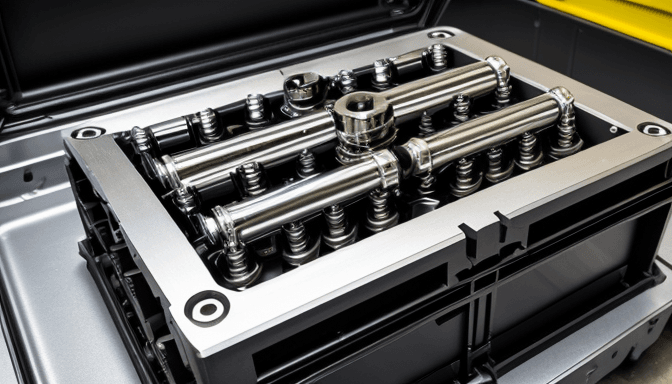
Top Brands: Brian Crower, GSC, Kelford, and Supertech
When it comes to upgrading your 2JZ engine’s camshaft and valve train, the brand you choose can make or break your build. It’s not just about slapping on parts; it’s about trusting names that have been tested on the track and in the streets. Brian Crower, GSC, Kelford, and Supertech are the heavy hitters in this arena, each bringing something unique to the table.
Take Brian Crower, for example. They’ve been around for decades, crafting cams that deliver smooth power and reliability. What sets them apart? Their cams are designed with real-world driving in mind, not just peak horsepower numbers. I remember swapping a Brian Crower cam into my buddy’s 2JZ-GTE, and the difference was night and day. The throttle response sharpened, and the engine felt alive without losing that classic 2JZ smoothness.
Then there’s GSC Power-Division. These guys are all about pushing limits. If you’re into high-RPM builds or track-focused setups, GSC cams offer aggressive profiles that keep your engine screaming longer without valve float. They also provide great valve train kits that work in perfect harmony with their cams. It’s like they think of everything—down to the last valve spring and retainer.
Kelford might not be as widely known in the US, but they have a solid reputation for precision engineering. Their cams often strike a nice balance between streetability and performance, making them a favorite for those who want a bit of everything. I’ve seen builds where Kelford cams helped drivers enjoy spirited weekend drives while still showing up strong at the track.
Last but not least, Supertech shines in valve train components. Their valve springs, retainers, and other parts are built tough to handle high RPMs and boost pressures typical in 2JZ builds. If you’re planning to push your engine hard, Supertech’s parts reduce the risk of valve float and keep things running smoothly. They’re the unsung heroes behind many reliable high-performance 2JZ engines.
To put it simply, picking the right brand is like choosing your pit crew. Each one has strengths that cater to different goals. Whether you want a street-friendly cam or a race-ready valve train, these four brands cover the spectrum with proven quality and performance. It’s not just about horsepower; it’s about building confidence under the hood.
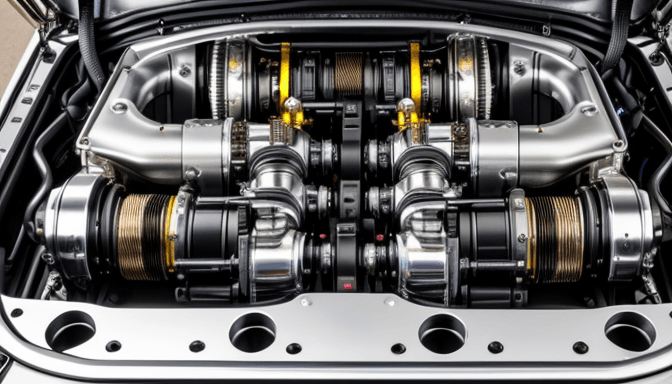
High-RPM Valve Train Considerations for Track and Drag
When you push your 2JZ engine to the edge, especially on the track or drag strip, the valve train becomes a battlefield. It’s not just about having big power; it’s about keeping everything together when the RPM needle climbs fast. Think of it like a tightrope walker—every component must be perfectly balanced and precise, or things fall apart quickly. High RPMs put insane stress on valves, springs, and retainers. If you don’t prepare your valve train for this, expect valve float, loss of power, and even catastrophic engine damage.
One key factor is spring pressure. At high RPMs, valve springs need to be strong enough to close the valves quickly but not so stiff that they sap power or wear out your cam lobes prematurely. It’s a delicate dance. Many racers opt for dual valve springs because they provide better control and reduce the risk of coil bind. But remember, stronger springs mean more load on your camshaft and lifters, so quality parts are a must.
Another crucial aspect is the weight of your valvetrain components. Lightweight parts like titanium retainers and aluminum locks reduce inertia, allowing the valves to follow the cam profile more accurately at high speeds. It’s like swapping heavy boots for running shoes—your engine breathes better and revs smoother. This upgrade alone can make a noticeable difference in how high and how safely your 2JZ can rev.
Don’t overlook camshaft profiles either. Aggressive cams with high lift and long duration can deliver massive power but may cause valve float if the rest of the valve train isn’t up to snuff. Matching your cam choice to a robust valve train setup is essential. Otherwise, you’re just asking for trouble.
Lastly, consider the valve lash setup. At high RPMs, even slight lash misadjustments can cause noisy operation, reduced power, or worse—valve damage. Precise lash settings ensure your valves open and close exactly when they should, maintaining peak performance and reliability.
In short, building a high-RPM valve train for track or drag use isn’t just about picking the strongest parts. It’s about balance, precision, and understanding how every piece interacts under extreme conditions. Get this right, and your 2JZ will not only scream at high revs but do it reliably lap after lap or run after run.
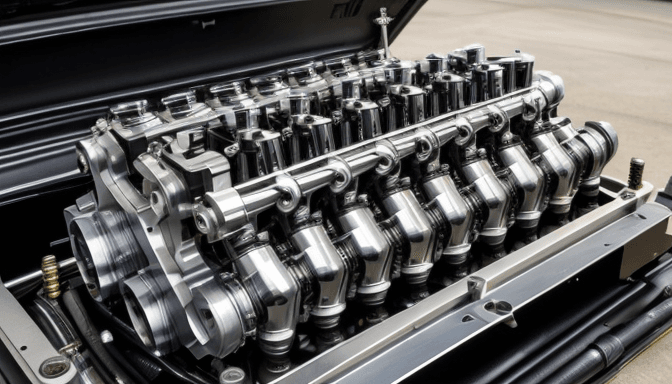
Common Mistakes When Upgrading the Valve Train
Upgrading the valve train on your 2JZ engine sounds straightforward, right? But here’s the catch: many enthusiasts jump in without fully understanding what they’re getting into. It’s like trying to fix a watch with a hammer—sure, you might get it open, but you’ll probably break something important. One of the biggest mistakes is ignoring the importance of matching components. You can’t just slap on a high-performance camshaft and expect everything else to play nicely. The valve springs, retainers, and even the rocker arms all need to be compatible to avoid premature wear or failure.
Another common pitfall is overlooking valve lash settings. This isn’t just a minor tweak; it’s critical for proper valve timing and engine health. Setting the lash too tight or too loose can lead to noisy operation, poor performance, or worse—valve damage. Many people underestimate how much this small adjustment affects the whole system. Think of it like tuning a guitar string: too tight, and it snaps; too loose, and it sounds off.
Then there’s the temptation to go for the most aggressive cam profile without considering your daily driving needs. Yes, a wild cam might sound exciting on paper, but if you’re stuck in traffic or cruising, you’ll lose out on low-end torque and smoothness. It’s a classic case of putting the cart before the horse. Always balance your cam choice with what you actually want from your car—whether that’s street-friendly power or all-out track performance.
Also, don’t forget the importance of quality parts. Cheap valve springs or retainers might save you a few bucks upfront, but they can cause headaches down the road. A friend of mine learned this the hard way when his engine developed valve float at high RPMs during a track day, all because he skimped on springs. Investing in trusted brands ensures durability and peace of mind.
Finally, skipping a proper break-in procedure after installing new valve train components is a recipe for disaster. The parts need time to settle and wear in gently. Rushing this process can lead to early failure and costly repairs. So, take it slow, listen to your engine, and don’t push it too hard right away.
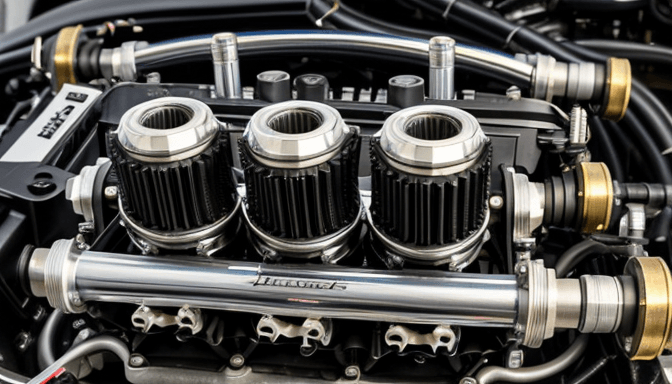
Do You Need Adjustable Cam Gears with Performance Cams?
When you dive into the world of performance cams for your 2JZ engine, the question of adjustable cam gears often pops up. Are they really necessary, or just another fancy add-on? The short answer: it depends on what you want from your build. But let’s break it down a bit.
Think of adjustable cam gears as the fine-tuning knobs on a stereo system. Sure, you can play music without tweaking the bass or treble, but adjusting those settings makes the sound crisp and perfect for your ears. Similarly, adjustable cam gears let you tweak the timing of your camshafts to squeeze out every bit of power and efficiency.
For stock or mildly upgraded 2JZ engines, fixed cam gears usually do the job just fine. But once you slap on a performance camshaft with aggressive profiles—higher lift, longer duration—the timing becomes more sensitive. This is where adjustable gears shine. They allow you to advance or retard cam timing, tailoring the engine’s powerband exactly how you want it.
Why is this important? Because even a slight change in cam timing can dramatically shift where your engine makes power. Want more low-end torque for street driving? You might advance the cams a bit. Chasing high-RPM horsepower for the track? Retarding the cams could be your ticket. Without adjustable gears, you’re stuck with whatever timing the cam manufacturer set, which might not perfectly match your setup.
Another thing to consider: when upgrading to performance cams, you’ll often pair them with other mods like upgraded valve springs, a stronger clutch, or a turbo boost increase. These changes can alter how the engine breathes and performs, making precise cam timing even more critical. Adjustable cam gears give you the flexibility to dial in the perfect balance without swapping out parts.
That said, installing adjustable cam gears isn’t a magic fix. It requires a bit of know-how and patience. You’ll need to measure and test different settings to find that sweet spot. But isn’t that part of the fun? Tuning your 2JZ to behave exactly how you want it is what makes the build personal and rewarding.
In conclusion, if you’re running performance cams on your 2JZ and want to get the most out of them, adjustable cam gears are more than just a nice-to-have—they’re a smart choice. They offer control, customization, and the chance to optimize your engine’s personality. Without them, you might miss out on some serious gains hiding just a few degrees away.
Frequently Asked Questions
- What camshaft duration and lift should I choose for my 2JZ engine?Great question! Choosing the right duration and lift depends on your driving style and power goals. If you crave low-end torque for daily driving, a cam with moderate duration and lift works wonders. But if you’re chasing high-RPM horsepower for the track, longer duration and higher lift cams will keep your 2JZ screaming. Think of it like tuning a guitar—tight strings for rhythm, loose strings for solos.
- Should I go with single or dual valve springs for my build?Single springs are like your reliable old friend—simple and effective for moderate RPMs. But if you’re pushing your 2JZ to the edge with high RPMs or forced induction, dual valve springs act like bodyguards, preventing valve float and keeping everything in check. It’s all about matching your valve springs to your engine’s ambition.
- Are titanium retainers really worth the investment?Absolutely! Titanium retainers are the lightweight superheroes of the valvetrain world. They reduce rotating mass, which means your valves respond quicker and your engine revs smoother at high RPMs. Plus, they help reduce stress on valve springs, extending their life. Think of them as upgrading from a bicycle wheel to a carbon fiber racing wheel—speed and durability combined.
- How do I properly set valve lash when installing aftermarket cams?Setting valve lash might sound intimidating, but it’s crucial for keeping your valvetrain happy. The key is to follow the cam manufacturer’s specs carefully and use feeler gauges to get the clearance just right. Too tight, and you risk valve damage; too loose, and you get noisy operation and poor performance. It’s like tuning a piano—precision is everything.
- Do I really need adjustable cam gears with performance cams?Adjustable cam gears are like the fine-tuning knobs on a stereo system. While not always mandatory, they give you the power to dial in cam timing precisely, squeezing out every bit of performance and ensuring your 2JZ’s powerband hits exactly where you want it. If you’re serious about performance, they’re a smart addition.
- Which brands are best for 2JZ camshaft and valve train upgrades?Brian Crower, GSC, Kelford, and Supertech are the big players in the 2JZ world. Each brings unique strengths—whether it’s Brian Crower’s robust durability, GSC’s precision engineering, Kelford’s aggressive profiles, or Supertech’s high-quality valve train components. Choosing among them depends on your build goals and budget.
- What are common mistakes to avoid when upgrading the valve train?One of the biggest slip-ups is mixing incompatible parts or neglecting proper valve lash settings. Also, ignoring spring rates or skipping lightweight components can limit your engine’s potential and cause premature wear. It’s like building a house on shaky ground—everything needs to be solid and well-matched.